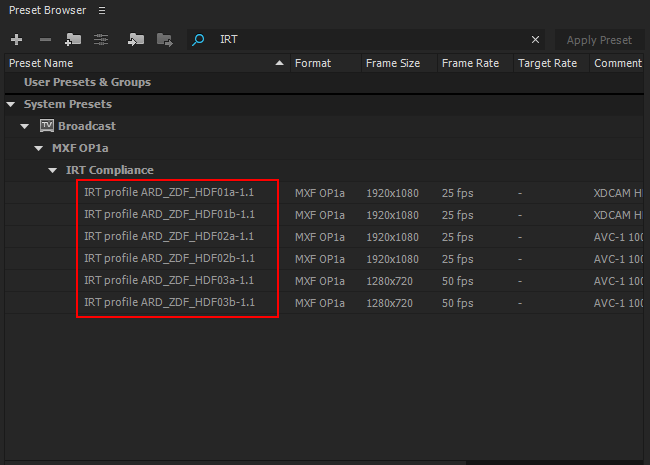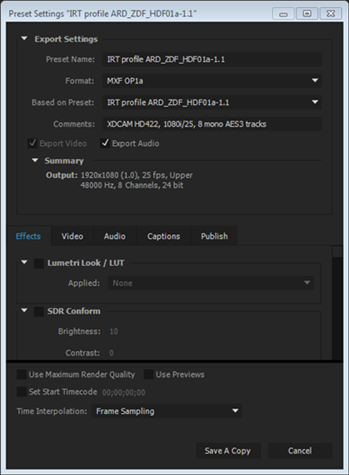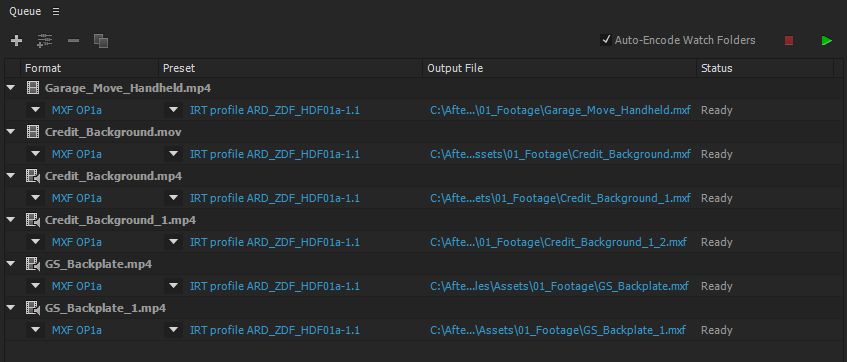To view the list of IRT presets, type IRT in the search bar in Preset Browser panel.
- Adobe Media Encoder User Guide
- Beta releases
- Introduction
- Encoding quick start and basics
- Overview of Adobe Media Encoder
- Media Intelligence in Media Encoder
- Using the Preset Browser
- Source Settings
- File formats supported for import with Media Encoder
- Managing third-party audio plug-ins
- Export media from Team Projects using Media Encoder
- Working with log files
- Files supported for export with Media Encoder
- Default keyboard shortcuts
- About video and audio encoding and compression
- Compression tips
- Set preferences
- Reset and restore preferences
- Keyboard shortcuts
- Encoding and exporting
- Create custom presets for Media Encoder
- Sync settings in Media Encoder
- Using the GoPro CineForm codec in After Effects
- Video Effects Manager in Media Encoder
- IRT compliance
- Export settings reference for Media Encoder
- Encode and export video and audio with Media Encoder
- Managing the media cache database
- Publish settings in Adobe Media Encoder
Overview
IRT (Institut für Rundfunktechnik) publishes the technical guidelines and specifications of Germany’s public broadcasters. There are six MXF Profiles for HD program material as specified by ARD, ZDF, ORF, and ARTE. There are presets in Adobe Media Encoder that correspond to each of these profiles.
The IRT compliance in Media Encoder CC ensures that your content conforms with German broadcast standards. The only way to get an output from Media Encoder CC that is IRT-compliant is to use one of the six presets.
Applying an IRT preset to a media file
-

IRT Presets 
IRT Presets -
To see the settings of an IRT preset, choose a preset and click Preset Settings. Choose an appropriate encoding format.

IRT preset settings 
IRT preset settings -
Add a media source in the Queue panel. Ensure that the media file has an IRT preset.

Adding media source 
Adding media source -
Click Start Queue to encode the files with IRT presets.


